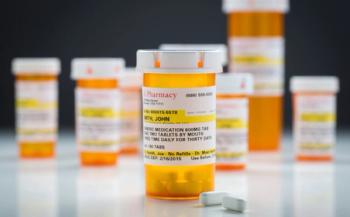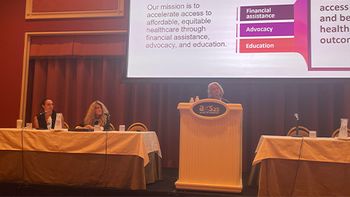
Patent Strategy Implications in the Biosimilars Space
Colleen Tracy James and Neil DuChez ask, is biosimilar litigation the new frontier as predicted or an area pursued less vigorously as under the Hatch-Waxman Act because of cost and manufacturing obstacles?
It has been a little over five years since Congress enacted the Biologics Price Competition and Innovation Act of 2009 (BPCIA) and there have been minimal challenges to innovative biologics. Is biosimilar litigation the new frontier as predicted or an area pursued less vigorously as under the Hatch-Waxman Act because of cost and manufacturing obstacles? As biological drugs gain increasing funding and market share, innovative developers of commercially successful biologics should contemplate threats in the market from biosimilars and be prepared in advance of a biologics license application (BLA) filing to defend potential litigation.
To be considered “biosimilar” under the BPCIA, the drug product must be “highly similar to the reference product” and there cannot be “clinically meaningful differences” in the “safety, purity, and potency” between the biosimilar and the innovative product. An “interchangeable” drug under the BPCIA is one that “may be substituted for the reference product without the intervention of the health care provider who prescribed the reference product.” Neither a product defined as “biosimilar” or “interchangeable” (collectively, “biosimilar” throughout the article) will be the same molecule as the reference product.
Robust market
Due to the way biological products are manufactured, it is virtually impossible for a biosimilar manufacturer to create the same compound as the referenced product. Indeed, because biosimilars may use different starting materials (e.g., different cell lines) from the referenced product to undergo biological synthesis in different manufacturing facilities, an exact compound match is virtually impossible.
The cost of bringing a biosimilar to market is a fraction of the cost of an innovative biological product. The BPCIA pathway reduces the time and cost required to research, develop, and gain approval by allowing biosimilar competitors to rely on data provided by the referenced product. One estimate is that it will cost approximately $1.2 billion to bring an innovative biologic to market compared to somewhere between $100 million to $200 million for a biosimilar. This estimate for biosimilars may be low as it is also estimated that manufacturing facility costs can range between $200 million to $400 million for U.S.-based facilities. Either way, the cost of making a biosimilar greatly exceeds the costs of making a generic small molecule drug. Therefore, building and maintaining manufacturing facilities will most likely be a key cost determinative factor in bringing biosimilar products to market. Biosimilars must also wait for the 12 years of data exclusivity to expire before receiving FDA approval.
The process of bringing biosimilars to market is, therefore, notably more difficult and expensive than bringing generic small molecule drugs to market. Despite the cost and difficulty in developing, manufacturing, and gaining approval for biosimilars, the increasing market share of biologics will galvanize generic competitors. Approximately 20% of drugs currently on the market are biologics. It is estimated that sales of biologics within the top 100 drugs worldwide will increase from 34% in 2011 to 49% in 2018. This, in turn, may lead to an influx of patent infringement battles under the legislation.
One approval, litigations just beginning
To date, only one biosimilar has been approved through the BPCIA pathway. The first such application was submitted July 24, 2014, by Sandoz for filgrastim, which is biosimilar to Amgen’s Neupogen. Approved Feb. 20, 1991, Neupogen is prescribed for patients receiving chemotherapy to reduce the risk of infections by treating neutropenia, a condition characterized by an abnormally low count of a type of white blood cell called neutrophils that helps fight off bacterial and fungal infections. It also brought Amgen $1.4 billion in sales last year. Sandoz’s biosimilar version, which will be marketed as Zarxio, was approved on March 5.
The only active BPCIA patent infringement suit pending is the one involving Sandoz’s filgrastim. The district court in the Sandoz v. Amgen filgrastim litigation recently ruled that the parties do not have to engage in the information exchange under 42 U.S.C. § 262(l)(2)-(6) before a suit is filed. Amgen sued Sandoz for Sandoz’s refusal to engage in the information exchange requirements under § 262(l) for its proposed filgrastim biosimilar product. In denying Amgen’s motion for partial judgment on the pleadings due to Sandoz’s undisputed failure to follow the steps under § 262(l), the Court held that “[w]hile engagement in the process creates a temporary safe harbor from declaratory judgment actions, a party’s failure to participate permits the opposing party to commence patent litigation.” The information exchange procedure outlined by the statute can take approximately eight months before an infringement suit may be brought. Therefore, allowing the parties to circumvent the process may speed up the litigations involving BPCIA applications faster than most envisioned when the statute was passed.
Sandoz and Celltrion each tried to bring declaratory judgment actions against the patent holders by claiming to be future BPCIA applicants. Both failed.
In Sandoz Inc. v. Amgen Inc., Case. No. 13-cv-2904, slip op. (N.D. Cal. Nov. 12, 2013), Sandoz sought a declaratory judgment that its product, which it claims is biosimilar to Amgen’s Enbrel, would not infringe certain patents before filing its FDA application. The Court granted Amgen’s motion to dismiss, ruling that the action was premature because Sandoz had not yet filed an application for FDA approval of the biosimilar drug, had not complied with its obligations to exchange information under § 262(l)(2)-(6), and Sandoz’s allegation that it intended to file an application with the FDA is insufficient to create a case or controversy.
Similarly, in Celltrion Healthcare Co. v. Janssen Biotech, Inc., Case No. 14-cv-11613 (D. Mass.) and Celltrion Healthcare Co. v. Kennedy Trust for Rheumatology Research, 14-cv-2256 (S.D.N.Y), Celltrion filed declaratory judgment complaints, alleging that certain patents are invalid or unenforceable, because it was planning to file an application for FDA approval of its drug that is biosimilar to Remicade. Celltrion later filed its FDA application, but both cases have nevertheless since been dismissed. In Janssen, Celltrion voluntarily dismissed the case before the Court could rule on Janssen’s motion to dismiss. In Kennedy, the Court granted Kennedy’s motion to dismiss as premature because the parties had not yet undertaken the dispute resolution procedures outlined in the BPCIA.
Reliance on DOE
Patent infringement in the biosimilar context may not be as straightforward as it is in the Hatch-Waxman setting. In many Hatch-Waxman cases, the compound of the active ingredient in a generic drug is the same as the branded drug, typically making infringement of claims to the compound relatively simple and sometimes stipulated upon. In contrast, as noted above, biosimilar compounds will have some differences compared to the referenced product compound.
A patent holder’s litigation strategy will therefore be dictated by the breadth of its compound claim. This is an issue that first needs to be considered during prosecution. A genus claim may be broad enough to encompass the biosimilar, but it may also be vulnerable to obviousness challenges if it is too broad. Including a series of narrowing genus claims along with species claims may enable the patent owner to walk the fine line between capturing the biosimilar and withstanding validity challenges. On the other hand, it is possible that a genus claim still may not literally cover a biosimilar product.
The biological arts are widely considered unpredictable, and a small change-such as an amino acid substitution in a protein-may have profound effects. This may allow a compound that does not fall within a genus claim to be classified as a biosimilar. In situations like this and where the claim is to the specific compound, the patent holder may likely be forced to rely on the doctrine of equivalents to protect its patent exclusivity.
A product infringes under the doctrine of equivalents if it performs the same function in substantially the same way and accomplishes substantially the same result, even if it differs in name, form or shape. The biosimilar’s BLA may clarify the function-way-result analysis. For example, the statutory idea of a biosimilar is that it will at least perform the same function and produce substantially the same result as the referenced product, but the unpredictable nature of biologics may cloud the “way” portion of the analysis.
Regardless of how the patent holder must argue that the biosimilar is an equivalent, it is again forced to walk the fine line between arguing that a small change in the biosimilar is not significant for infringement purposes, yet may be forced to argue that small changes in its own compound compared to prior art is significant enough to make it a patentable invention. Clearly, the smaller the difference between the referenced product and the biosimilar, the easier it will be for the patent owner to make a doctrine of equivalents argument. Will a product defined as “interchangeable” be more vulnerable to a doctrine of equivalents claim than one that is defined as “biosimilar?” Legally, this distinction may not matter to the claims at issue if it is not based on the structures of the particular compounds, but it may, nevertheless, have an ontological impact on the fact finder.
Another possibility is that courts adopt the theory that a drug product’s classification as “highly similar” or “interchangeable” creates a tacit presumption of being an equivalent. Of course, courts may go the other way to say that the unpredictability of the technology forbids such a presumption.
It is still anyone’s guess as to how patent holders will fair in infringement cases against drugs approved under the BPCIA. Clearly each case will have unique facts that will determine the outcome, but the doctrine of equivalents will likely play a large role in many.
Colleen Tracy James is a partner and Neil DuChez an associate, both in the intellectual property group of
Newsletter
Lead with insight with the Pharmaceutical Executive newsletter, featuring strategic analysis, leadership trends, and market intelligence for biopharma decision-makers.





